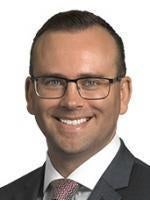The question of vicarious liability in the context of nonemployment relationships has been a key issue confronting courts dealing with institutional sexual abuse claims.
Indeed, the High Court of Australia will soon deliver judgment in Bird v DP (A Pseudonym), which is an appeal from the Victorian Court of Appeal’s judgment in Bird v DP (A Pseudonym) [2023] VSCA 66 (Bird) upholding the trial judge’s finding that the Diocese of Ballarat was vicariously liable for the tortious acts of a nonemployee assistant priest.
In the meantime, a jury has recently found Footscray Football Club Ltd (Footscray) liable to Adam Kneale in negligence for injuries caused by sexual abuse perpetrated primarily by Footscray volunteer, Graeme Hobbs (Hobbs). He obtained a judgment against Footscray in the sum of approximately AU$5.94 million, including a significant award of AU$3.25 million for pain and suffering and approximately AU$2.6 million for past loss of earnings and loss of earning capacity.
The Supreme Court of Victoria (the Court) has recently delivered its judgment in Kneale v Footscray Football Club Ltd [2023] VSC 679, addressing the following specific questions:
- Whether there was evidence on which a jury could find that vicarious liability attached to the “sporting club-volunteer” relationship between Footscray and Hobbs (this was put separate to the negligence claim against the club)—the answer was no.
- Whether there was any evidence on which a jury could award aggravated or exemplary damages to Mr Kneale—the answer was no.
- Whether past loss of earnings claims can be indexed so that they are valued at “today’s money”—the answer was yes, which stands to increase the quantum of these claims moving forward.
- Whether Part VB of the Wrongs Act 1958 (Vic) (Wrongs Act) applied to Mr Kneale’s future economic loss damages claim on the basis that it was an “award of personal injury damages” for the purposes of that part, such that a greater discount rate applied to any award of damages for future economic loss—the answer was no.
The judgment is particularly relevant to sporting clubs investigating and otherwise defending abuse claims, as well as insurers managing institutional abuse claims. The judgment is accessible here.
FACTS
Between about 1984 and 1989, Hobbs sexually abused Mr Kneale and trafficked him for abuse by others. Hobbs was a volunteer at Footscray at the relevant time, with the abuse primarily taking place at Footscray’s Western Oval and attached offices.
VICARIOUS LIABILITY
Mr Kneale relied on the principles formulated in Bird in support of his unsuccessful argument that Footscray was vicariously liable for Hobbs’ conduct, given his volunteer role at the club.
The Court described Bird as an example where the Victorian Court of Appeal deemed it just, as a matter of policy, to extend vicarious liability to the “Diocese-priest/assistant priest” relationship. Bird did not constitute an open invitation to litigants to seek to attach vicarious liability to other nonemployment relationships, by reference to the principles developed in that judgment (and the decisions before it). Indeed, as a matter of law, the Court did not consider vicarious liability attached to the “sporting club-volunteer” relationship.
Further, the Court distinguished the “Diocese-assistant priest” relationship in Bird from the “sporting club-volunteer” relationship in this matter.
Specifically, Hobbs’ volunteer role was described as being “informal, undocumented, and uncertain”, which was reflected in Footscray’s lack of any policy on the recruitment, supervision or control of volunteers. The lack of any such policy is a common issue for sporting clubs dealing with claims arising from abuse that occurred many decades ago, although it appeared to assist Footscray’s position in this instance as it arguably reflected the club’s argument that it did not exercise any control over Hobbs’ volunteer role.
The Court otherwise noted that Hobbs could not delegate his work, and his authority was limited to selling tickets and fundraising for the club. There was also no evidence of Hobbs ever wearing Footscray attire in performing his functions.
In the above circumstances, the Court did not consider Hobbs was an “emanation” of Footscray or that his work was so interconnected with the business of the club such that it would be vicariously liable for his conduct.
This was so despite Hobbs being described as well-known at Footscray over the relevant period and the volunteers at Footscray being described as absolutely critical to the functioning of the club at the time.
Finally, the Court found that there was no evidence to suggest that Footscray assigned any role to Hobbs in respect of Mr Kneale or any “special role involving authority, power, trust, control, or the ability to achieve intimacy” with him. To the contrary, Footscray did not know Mr Kneale existed during the time of the abuse.
This judgment is an instructive reminder that courts remain cautious in extending the reach of vicarious liability to nonemployment relationships, despite recent, highly publicised judgments perhaps suggesting otherwise in the institutional abuse context.
AGGRAVATED AND EXEMPLARY DAMAGES CLAIMS
Mr Kneale’s claims for aggravated and exemplary damages were unsuccessful, principally because he did not establish on the evidence that:
- Footscray had acted with malice towards Mr Kneale or in an insulting or high-handed way, such that Mr Kneale was entitled to an aggravated damages award.
- Footscray’s negligence had been deliberate, intentional or with reckless disregard to Mr Kneale’s welfare, such that it warranted punishment and denunciation in the form of an exemplary damages award.
In circumstances where no aggravated or exemplary damages were awarded to Mr Kneale, the AU$3.25 million in “pain and suffering” damages awarded to him is truly significant.
Footscray’s lack of knowledge of Mr Kneale’s existence and his abuse by Hobbs outweighed the evidence of “red flags” being raised by a Footscray player in 1981 with its finance and administration manager in relation to Hobbs and the club being notified of abuse allegations made against Hobbs in 1993.
INDEXATION OF PAST LOSSES
Notably, the Court considered that any past loss of earning claims (that is, past economic loss) should be indexed for inflation because it ensures that the value of past losses is in “today’s money”.
The practice of indexing past economic loss claims is not well-established in Victoria, despite Victoria not providing claimants with a statutory basis on which to recover interest in relation to those claims.
Indexing stands to potentially increase the quantum of institutional abuse claims, especially those dealing with significant past economic loss claims arising from abuse that occurred many decades ago.
DISCOUNT FOR FUTURE LOSSES
Consistent with PCB v Geelong College [2021] VSC 633, the Court held that Part VB of the Wrongs Act did not apply to Mr Kneale’s future economic loss claim. This is because Footscray was liable to Mr Kneale in damages for injuries caused by sexual assault or sexual misconduct, such that section 28C(2)(a) of the Wrongs Act applied.
It followed that the discount rate of 3% (not 5%) applied to Mr Kneale’s future economic loss claim.





 />i
/>i
